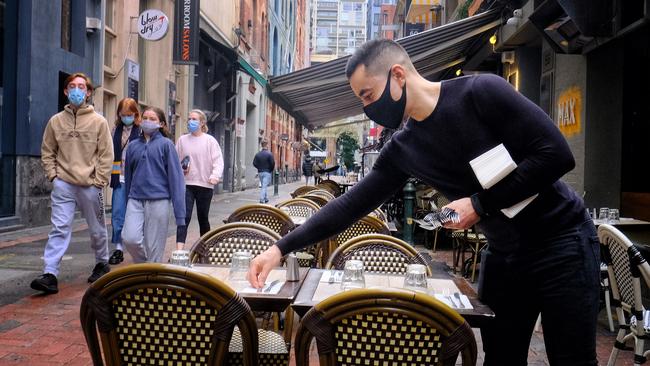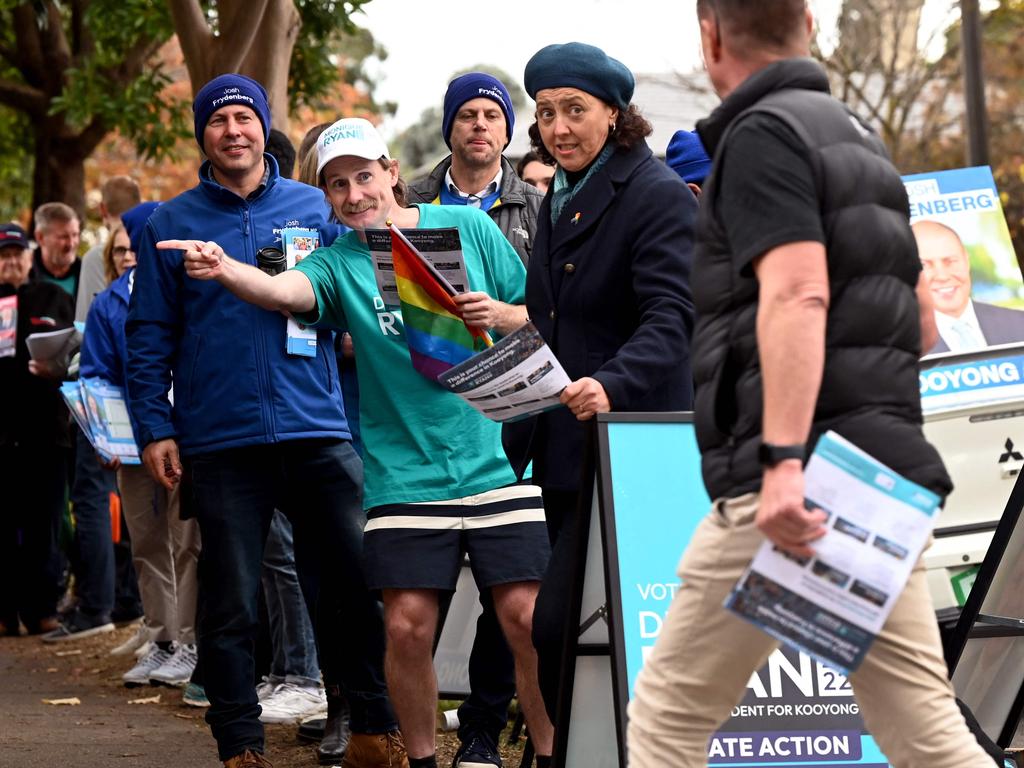Wages growth inches up, real pay in reverse
Wages growth disappointed again despite labour shortages and reports of climbing pay, rising slightly to 2.4 per cent and still well shy of inflation.

Real wages are falling at their fastest pace since the introduction of the GST, new data has revealed, even as petrol prices push back above $2 a litre days ahead of an election fought on climbing household cost of living pressures.
The Australian Bureau of Statistics’ wage price index showed an annual increase of only 2.4 per cent over the year to March, from 2.3 per cent in December, falling just short of economists’ forecasts, despite widespread labour shortages, a record number of job vacancies and unemployment on the brink of a 50-year low.
The data will likely weigh against a super-sized Reserve Bank rate hike next month, but with inflation running at 20-year highs of 5.1 per cent, is unlikely to prevent the RBA board from delivering a second 0.25 percentage point increase in its key cash rate target when it next meets.
Real wages dropped 2.7 per cent over the year – indicating an erosion in living standards and adding further fuel to the burning cost-of-living election issue just days out from the poll.
The fall in real pay was the second worst in the history of the wage price index series stretching back to 1998, and only just shy of the 3 per cent fall in 2000.
The price of unleaded petrol has jumped back above $2 a litre in the capital cities over recent days despite the 22.5 cent cut to the fuel excise, according to fuel price tracking site MotorMouth, adding to the pain being felt by household budgets.
As the Fair Work Commission held a public consultation on Wednesday ahead of its minimum wage rise decision next month, ACTU Secretary Sally McManus described the new wage growth figures as “a disaster for working people”.
“Working Australians are being forced to cut back on even the most essential items. It is shameful that the Morrison Government is refusing to support a $1 per hour for workers on the minimum wage,” Ms McManus said.
Scott Morrison has described Anthony Albanese’s support for a rise in the minimum wage to match inflation as “reckless and dangerous”, and that it would cost jobs and force the RBA to hike rates faster and further.
The Prime Minister, however, has refused to be drawn on how much of an increase the country’s lowest paid workers should receive, saying it was a decision for the independent FWC.
Employer groups have also urged the FWC to deliver a much more moderate increase in the minimum hourly rate.
The seasonally adjusted wage price index figures from the Australian Bureau of Statistics showed pay rates for a basket of jobs rose by 0.7 per cent in the March quarter, unchanged from the previous quarter and just below the 0.8 per cent anticipated by bank economists.
Despite the disappointing figures, the 2.4 per cent increase in the wage price index was the highest annual rate since December 2018, ABS head of prices statistics Michelle Marquardt said.
The data showed that while only 15 per cent of jobs received a wage hike, the size of the average pay increase at 3.4 per cent was the highest since mid-2013, pointing to potentially robust pay gains once industrial awards and agreements are reset.
Barrenjoey chief economist Jo Masters also said wages growth would accelerate, most likely from the September quarter as wage agreements reset for the new financial year and the rise in minimum pay kicks in.
With labour force figures on Thursday anticipated to show unemployment falling below 4 per cent for the first time since the 1970s, Ms Masters said “the pressure on wages is mounting”.
Citi senior economist Faraz Syed said he expected the FWC to deliver a minimum wage increase of 3.5 per cent, and that the decision would “set the tone for wages growth for the remainder of the year”.
Mr Syed predicted annual wage growth would push to 2.7 per cent in June and reach 3.3 per cent by the end of this year.
Reserve Bank board minutes released on Tuesday made clear that the central bank is now relying more on its business liaison program, which has shown accelerating pay rates as labour shortages bite.
“While the inertia arising from multi-year enterprise agreements and current public sector wages policies would continue to weigh on aggregate wages growth in the near term, a period of faster growth in labour costs overall was in prospect,” the minutes read.
The RBA has forecast the wage price index will climb to be around 3.75 per cent by mid-2024, but that real pay would only turn positive towards the end of next year.
Wages growth averaged 3.7 per cent over the first decade of this century, but has been on a steady decline since, averaging only 2.7 per cent between 2010 and the end of 2019.
Pay freezes during the pandemic pushed wage rises down to their lowest levels in history, at 1.4 per cent.







To join the conversation, please log in. Don't have an account? Register
Join the conversation, you are commenting as Logout